|
This is an announcement I didn’t know I’d be making, let alone one that would feel so right deep down in my bones to make. But, well, here we are. I’m taking at least a year off from writing new books.  There, it’s out there which makes it feel more real, more right. I want to spend this year focusing on my son, and while I’ll still post on social media and read books and have those reviews for you, I won’t be writing any new stories despite the plans I have for certain series and characters. I just can’t devote the appropriate brain power to those endeavors, and I really don’t want to miss out on this crucial year in my child’s development. Book reviews and social media don’t require the same level of focus and dedication as writing my books and crafting my characters do, but still provide a creative outlet for me when I need it without the pressure of my career hanging in the balance. But this decision has also made me accept a hard truth: me taking a year off is not going to hurt my business. I don’t have the hype to lose for my books at the moment (which they deserve in my opinion). With Ellinor’s first series arc complete, I don’t lose anything by taking a hiatus. It’s sad, but a truth most indie authors know maybe a little too well. Who knows, taking this break to refill my creative tank and reset some of my social media may do wonders for my author brand. But regardless, my priority right now is my son and I am privileged enough with my husband to be able to use this flexibility in my career to our child’s benefit, something I know not everyone is fortunate enough to have. I’ll still be brainstorming ideas for new worlds and the stories and characters to inhabit them with, but you won’t be getting any new books from me this year. I guess it’s a good thing my backlog of books is relatively decent. If you miss my work during this time, feel free to start either my YA epic fantasy series, The Monster of Selkirk (6 books), or maybe even my adult science fiction fantasy magical cyberpunk series, Ellinor (3 books), or you can dabble with my Cosmin novella, or one of my short stories (linked on my website). See? You’ll barely even notice I’m “gone” with so many books, stories, and flawed characters going on adventures with their found families of mine to keep you company!
0 Comments
Last baby blog post, I swear. I’m not interested in turning my spaces into parent focused discussions, but there are some things important to work through emotionally, and then there are things that, practically should be mentioned as well. This one happens to focus on the latter. After this, we’ll go back to discussing books (both mine and the ones I read) I promise. There are thousands, if not more, blog posts talking about “things I wish I knew to pack when going to have a baby”. And so many of them are spot on. “Lucie’s List” is a particularly wonderful source. But you know what? Even the best intentioned and most veteran of moms with a horde of children and grandchildren, forget to mention things. Probably because certain things seem obvious. But NOTHING is obvious for first time parents. Especially if those first-time parents who don’t have friends with kids, or have family members who haven’t had a kid in a decade/don’t live close by. The latter is the situation I found myself in. Things change over the years when it comes to labor and having kids and what to do about things like colic. Those rose-tinted glasses come down over most veteran parents’ eyes and the advice you’re given is “enjoy this time, it’s over so fast.” To that I say: good. The newborn phase isn’t peachy for every parent so telling us to “enjoy it” is like telling someone to enjoy going to get a root canal without Novocain. It’s all good intentioned and could very well be true, but still. It just fosters a sense of guilt in new parents who maybe don’t like the 4th trimester. But I digress. This post was supposed to be about things I wish I had known to pack when going to the hospital, so let’s get back to it. Super baggy pants.
Most blogs tell you to bring comfy pants for after delivery. I did that. Or I thought I did. But the baggy pants I brought had elastic that I thought was loose enough but still not as big as my pregnancy pants. But no. Even that elastic hurt my stomach afterwards and I had to have my husband go home and get me my PJ pants instead. So that’s what I mean, and probably those other blogs too, when they say to bring comfy clothes for afterwards. It’s not just that you’ll still look about 6-7 months pregnant right after delivery, but your whole core is so tender that any kind of pressure is felt ten-fold. Yes, everyone wants to look nice for photos or friends and family that will inevitable just show up, but fuck that. Wear the PJ pants. You just had a baby, you get to be the comfiest and if that means being in yoga pants that have holes and whose elastic has completely died, then do it. Your very tender belly will thank you. Compression socks. Most places I found say to bring sandals for afterwards when you’re recovering in the hospital, but they fail to say just why exactly. Or maybe they didn’t and I just missed it, either is possible. However, I did not know my feet, ankles, and calves would swell up like a motherfucker after labor. And my swelling was BAD because of how many fluids they had me on, so your swelling may vary. My doctor told me to bring slip on shoes, but no one specifically said it was because of how intense the swelling would be. And yet every nurse who checked on me shrugged and said “it’s normal”. You know what helped and also got the swelling to go away super-fast that no one mentioned until I was being discharged? Compression socks. Chances are you probably got some anyway during the course of your pregnancy to help with circulation if you sit for a while or did any traveling by plane, so bust them out again and bring them with you. Trust me, my compression socks were a life saver in helping with the painful feet swelling. Pack like you’re going to have a c-section even if you don’t/aren’t. Most hospitals tell you to pack for a 2 day stay, because that’s what most require for vaginal birth. But pack like you’re going to be there for a c-section even if you aren’t planning on one. For starters, you never know if you’ll have an emergency, but, mostly, it’s nice to have options in case you’re like me and underestimated the level of discomfort you may have. Plus, if you pack like you’ll be in the hospital longer, and in bed longer for a c-section, you’re more likely to bring some form of entertainment to help fill the time, like a book or a Nintendo Switch. “A book? But you’ll have a newborn!” True! Unless you’re like me and have your newborn taking into the NICU… Plan and pack for shit to hit the fan, that’s all I’m saying… Your birthing partners can leave, make sure they don’t, or don’t for long. I was in the hospital for 58 hours before my child was born, and my husband stayed with me the whole time. He could have left, he did briefly occasionally to check on the pets or to get more underwear (for him). But he was never gone very long and I am so thankful for that. It’s stressful and scary to give birth, especially if it’s your first. People come in and out of your room all the time, and if you have a long labor like mine, you see different nurses for every shift. Having someone there who can help you articulate your needs when the pain is too much is vital. Yeah, they may be bored but so what? If they can stay, they should, you’ll feel better for it and ultimately, you should have anything and everything during that time that will bring even an ounce of relief. So, birthing partners: don’t be a dick, stay with your partner the whole time and do whatever it is they ask of you. And that’s it. Well, not entirely but I don’t feel qualified to give more thoughts or advice than this. Other mom blogs and sources have far more resources, this is just what I found to be lacking in terms of what knowledge I wanted before heading to the hospital. I hope it helped some, or at least brought some level of insight if nothing else! 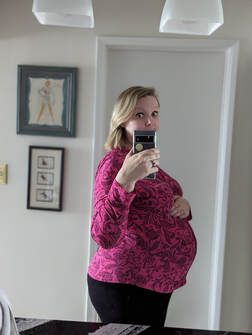 I never thought I’d be one of those people to write a pregnancy and birth blog post. To be honest, part of me never thought I’d be a mom, either. And not because I struggled conceiving; I just had a hard time believing that, at 35, my husband and I would get to a place where we were comfortable and secure enough to bring a child into the world, but here we are. Here’s the thing: my pregnancy was incredibly boring, barely an inconvenience. That alone almost felt too taboo to share. It felt safer to commiserate on how terrible pregnancy was with people who had been there, done that. It felt NORMAL to experience horrific morning sickness, to be too uncomfortable to sleep, to be moody and irritable. I had none of that.  I even asked my OB/GYN if THAT was typical, to feel so… normal, during pregnancy. She looked me dead in the eye and asked, “Why do you want pain?” The answer: I didn’t. But difficult pregnancies were normalized to me. What the media glorified about pregnancy was that all pregnant people’s experience needed to be akin to a war story. My doctor said the discomfort would come later, when I was too big to properly put shoes on—that, sadly, was true. But it wasn’t discomfort so much as annoyance that this easy thing, this thing I had done since I was a toddler, was now a chore to do. I kept thinking to myself “this is too easy, something is bound to go wrong”, like I was using up my karma early and Murphy’s Law would come crashing onto me like lightning. Logically, I know that’s a fallacy. But then things suddenly were not smooth anymore and that validated my irrational thinking. Did I worry myself into complications? Probably not but who knows? At just over 36 weeks, I went into preterm labor. Like any soon-to-be-new parent, I wasn’t quite sure I was having contractions. It hurt, sure, a painful cramp in my lower abdomen. But all the blogs online said that a contraction should radiate over my whole belly. Right? That I would just KNOW when labor started, that my natural instincts would take over or… or something. But as the night wore on, I became less and less sure if that was right. Were these Braxton Hicks contractions? Maybe, but they HURT. Suddenly I realize that, that pain I was looking for to validate my pregnancy experience was here. I went through just over a day of those contractions before I called my doctor, before they told me to go to the ER. I went to the hospital at 10:30 pm on 1/22/2023. I was already 4 centimeters dilated. I hadn’t slept the night before because of the pain. They ran their tests, and come early morning on the 23rd, I was checked into the maternity wing, and shortly thereafter I was on an epidural. The goal was to slow my labor down, to get a round of steroids to help my baby’s lungs develop a wee bit more, and to give him just a bit more time in general. My son was considered a late-term preemie at that point, but the concern still remained that he wasn’t quite ready to be out in the world. Fast forward past seven rounds of penicillin, countless IV bags, and absolutely no food (chicken and vegetable broth and sugar water Jell-O does not count as food), to finally breaking my water, and absolutely no getting out of bed, before, in the early hours of the 25th when my son finally made his entrance into the world. For those of you keeping track, that was 3 days of me not sleeping, barely eating, and hardly moving, so I shouldn’t have been surprised that when my son came out, his blood sugar was dangerously low. But the nurses got him to perk up! Hurray! They wheeled us to the maternity ward, and we were off to the races. Or that was the plan. But my son wouldn’t eat, his blood sugar kept dropping, which further made him not want to eat… I got a total of 3 hours with my son before the nurses called in the NICU doctors. 3 hours before they took my son away and admitted him into the NICU. 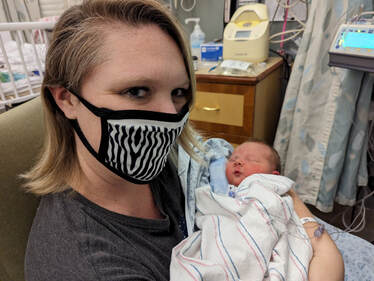 Oh but “Thankfully the NICU was in the same hospital! Thank goodness it’s one of the best NICU’s in the state!” Yeah, that was great and all, honestly the doctors and nurses were fantastic, but in that moment? I wasn’t thankful. I wasn’t consoled. I wasn’t relieved. I could barely walk yet, was trying to figure out the breast feeding thing (my hospital really pushed/pushes that), and here’s the nurse, taking my baby away. I had failed. I had done something wrong. Right? (No, but logic has no place in this moment). That’s when all my maternal hormones kicked in. Watching the nurse wheel my baby out of my room, my heart just shattered. I had used up all my good luck on myself and failed. “You failed already as a parent”, the mean little voice in my head kept saying. “You have no right to be upset; your son is better off then other babies in the NICU.” I couldn’t win, I could find no reprieve. My husband was a pillar of calm but even he was devastated and there was only so much we could do to make things better; for ourselves and our child. Then, on 27th, I was discharged from the hospital. My son was not. The delayed parenthood was a strange limbo to remain in. I had my baby, but he wasn't in my care, so am I actually a new parent yet? Everyone says to use this time to sleep but then the guilt makes that impossible. How do you sleep when you worry about getting another phone call from the hospital? The guilt about being able to do, well, anything was harder to carry than I expected. We were “fortunate” to be able to get everything done that his premature arrival had kept us from completing, but we were moving and functioning with a ravenous shadow nipping at our heels. Reminding us that nothing was the same. Making us feel terrible if we didn’t spend more time at the hospital with our son, for taking advantage of the time we unexpectedly got with him having 24/7 nursing care. We couldn’t win, couldn’t escape, and yes, being in the NICU helped but at the end of the day we still had to go home and our baby had to remain where he was. He was there for a week. 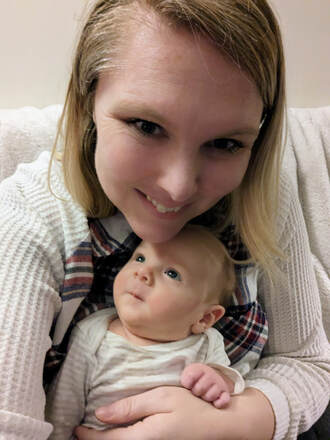 Taking him home was beautiful, a huge stress reliever. But then the fear of that missed bonding time settled over us, a type of hypothermia that paralyzed us. The fear that, now without all those professional, watchful eyes, something would go wrong again. I didn’t dare sleep that first night. I watched my son, making sure he was still breathing, that he wasn’t too hot or too cold, that he would eat, that he had gone to the bathroom. I was told later this was normal, but why wasn’t I told sooner? And if I had been told, would that have even made a difference? There are some feelings, some experiences that are universal to all new, first-time parents, but that fear, that delayed parenthood and ordeal of having your child taken into special care because they are too sick, comes with a unique guilt fueled trauma that neither my husband nor I knew what to do with. It wasn’t until we were home that other NICU parents made themselves known; a community emerged. We didn’t feel so alone but nothing would change what we went through. No amount of “You didn’t do anything wrong” would change things now. The fear is still there of “what does this mean for my child?” Will I look back in 10 years and say the lack of early skin-to-skin is the reason my son is acting out now? Or the reason behind XYZ problem? The “what ifs” are frigid mountains looming in my mind, my destination ominously heading toward their peaks despite the danger. I know such thinking is a delusion, but that doesn’t change the road I’m on, either. So what was the point in this story? Partially its meant as a therapeutic exercise for myself, to get out all these churning, fear fueled burning thoughts out into a place where the only space they can occupy is digital rather than mental and emotional. The other part? Is to let others know there is a community out there of people who went through this; both the mundane and the traumatic. That acknowledge it’s traumatic and the toll it takes, the way it changes what you thought about whatever parenting style you were going to tackle this baby with. No one really considers the NICU or early labor to be part of their birth story, so, when it happens, you’re blindsided like a bicycle hit by a truck at an intersection. This experience was not fun, it was not beautiful. And just like I discovered I wasn’t alone in this, in these feelings or experiences, I want others to know the same. I want others to know that, just like how my son and I ended up being okay, you’ll be okay too, even if it doesn’t feel like it right now. You will get through this. You can do this. You are not alone. 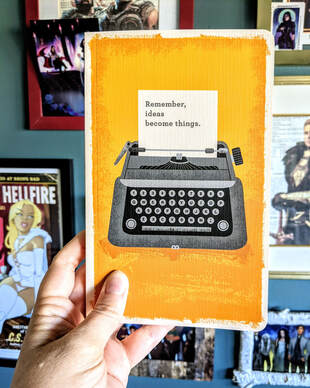 If you know me booknerds, friends, and writers, you know that I don’t like giving writing advice. Advice on writing a book is literally everywhere, often contradictory, and often billed as a “do this and you can’t fail” or “this is the correct/only way to do a thing.” I don’t believe in that, nor subscribe to that mentality. So, know that when I talk about writing, it’s strictly through a lens of: this works for me, and therefore may work for you if you are looking for new things to try. So, with that in mind, let’s talk about setting the mood when I/you/we sit down to write! My books all tend to be emotional whirlwinds; they include everything from unabashedly fun action, to swoony tender moments, to scenes of extreme emotional pain/grief. Those scenes can take a lot out of me when I write; from the frantic energy I feel when I write my fight scenes, to bringing myself to tears as I dig deep for those scenes where I am less than kind to my characters. Some writers can write out of sequence, but I can’t. I write linearly so if I get to a sad scene when I’m in a good mood, then I’ve got to go to a dark place to set the writing tone. Those writers who can write out of sequence can mark a scene or chapter as something emotionally devastating and will revisit that scene later, when the fun bits that match their current frame of mind are all taken care of. But, since that’s not a process that works for me personally, I’ve learned to improvise. 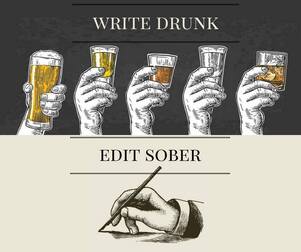 The biggest thing that helps me get into a particular mood is music. Paying for my Spotify was one of the best writing investments I’ve made as it gives me access to so, so much music. I can curate playlists based on what I need to convey. It helps me capture the flow and tempo of the chapter, regardless of my mind frame: from break up angry/sad music, to high tempo action scenes, and moments of bittersweet character growth. It can take a bit of time to comb through all that music to find what I need, but getting that sorted before I dive into the scene does tend to save me some time when it comes to revisions, as I’m not struggling so hard to fully capture a certain mood or frame of mind. There is one exception to this though: writing sexy sex scenes. I don’t write a lot of detailed sex scenes. I was firmly in the YA camp for several years, after all. But now that I am writing more adult fiction, it’s becoming more common. Music can still help with this, but, if you’re like me and get embarrassed writing those closed-door scenes, setting the music just isn’t enough. What does help me, however, is wine. If I know a sex scene is in my characters future, that is the one kind of scene I can, and will, write out of sequence. Generally, because it’s fluff to the plot, I can put a big note that says: WRITE THIS LATER and then, when it is socially acceptable to drink, come back and finish the scene. Writing a little tipsy for those sex scenes keeps me from second guessing myself, and basically helps me just get out of my own way so I can get that first draft done. I don’t condone alcoholism or anything, but there is a reason why “Write drunk, and edit sober” is a saying that’s been around for a long time (and contrary to popular belief, Ernest Hemingway didn't actually say it)… 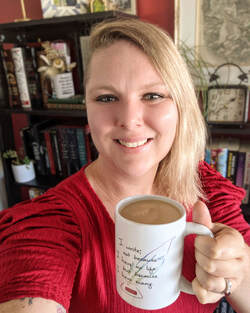 It may sound simple, too simple, dare I say, but this is a very Occam’s Razor scenario for me. Sometimes the simplest answer, or writing method, is the right one. Waiting for your muse or inspiration to strike, for you to be in the right mood before diving in can lead to your book never getting written. Sometimes, you do have to wait, and those blocks are bigger to get around. But if you’re simply waiting to write a scene or a chapter until you “feel like it”, then give setting some mood music a try! Or crack open your favorite adult beverage and let the words flow without overthinking every word you put on a page. Now, it should be said this is my method for first to second drafts only, but those are usually the hardest drafts, so there you go. I hope you found this helpful and/or interesting! And if you have any methods for how you set the mood for your writing or reading, please share! I’d love to see what others do. 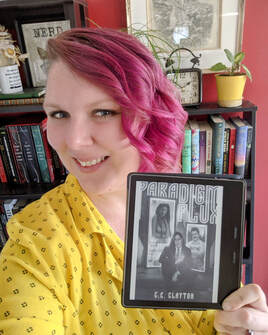 Hey friends! So, as I work on getting my next book properly formatted and then uploaded so it can be, drum roll please, published (gasp!) I figured it was the perfect time to talk specifically about publishing. I get asked questions occasionally on what to do or what’s the difference between small press and self-publishing, but I realized I never did a basic post on the more… technical aspects of self-publishing, shall we say? There are so many people out there who say they have the perfect guide to publish your book, if you pay them. Seriously, even a quick search on Amazon for “how to publish” will get you thousands of results and that can be really overwhelming. Especially when you are sinking money into these resources. I am in no way the end-all-be-all expert when it comes to publishing, but I hope that by sharing what I’ve done and what worked for me, that at least gives people who are interested a starting point, or, if nothing else, gives all my favorite booknerds an inside look into what indie authors go through in order to get their books into your lovely, lovely hands. 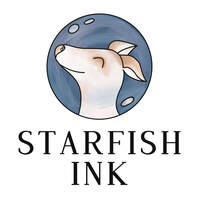 So! You’ve written a book, gotten it edited, have a beautiful cover, and want to get it into the hands of readers. Firstly, congratulations! That’s an amazing accomplishment in and of itself. But where do you start in order to make that dream a reality? Well, first decide if you want to publish under your own publishing name, or if you are comfortable with being listed as a self-published book. Any option is fine, but personally, I like publishing under my own company name—StarfishInk. So, what I did, was I registered my publishing name as a Sole Proprietorship so that I own the name and company I'm publishing under, but it’s not an LLC so there weren’t extra legal hoops to jump through. This was the first step to making my books into a real business as I plan on releasing a lot of books in different series. But, if you only want to publish the one book, you may not want to do that, which is fine! This is not a requirement to publishing by any means, but just a layer you can add on depending on how you want your books data to be listed on places like Amazon. That being said, there are two big places to turn to in terms of printers for indie authors: IngramSpark, and Amazon. These aren’t the only ones, but I have used both to format, print, and publish my books. You don’t have to use either Amazon or Ingram to create the interior of your books, though. If you are skilled, you can do that yourself as there are several formatting services that can help you take your word doc and turn it into something publishable. Indesign programs can do this, as can Vellum and several others. I, however, do not have that kind of skill and so I use the creation services that Amazon has and use my own images for the chapter headers or scene breaks. Both Ingram and Amazon have pretty intuitive systems, but I do like Amazon’s better, but you may want to do both if you are planning on having your ebooks and paperbacks distributed wide (which means you don’t use Kindle Unlimited). Amazon is one of the only ebook providers to use the mobi file formats, most other ebook readers use epub. Both services will create these file types for you though, so you don’t have to worry about that, but, in case you couldn’t tell by now, IngramSpark and Amazon do not play well together. They are competitors, after all. So, for example, I use Ingram for Resistor’s hardcover as Amazon doesn’t have that capability (yet), but Amazon doesn’t like losing that sale, so they claim my book is not in stock, or not available for pre-order when it absolutely is. It’s petty, and, unfortunately, there’s not much indies can do to fight that. So, it becomes a question on where you want your book listed, and what process you find easiest to use, and then going with that. But the good thing with both of these services is they are Print on Demand (POD) so you never have to worry about setting a number of books you want printed for sale. As people buy them, they are printed to fulfill that demand. Of course, that doesn’t limit you from ordering author copies for yourself, but you can do that at any time after your book is available, as many times as you want, so you don’t have to worry about ordering too few if you run out of signed copies to sell on your website, for instance. 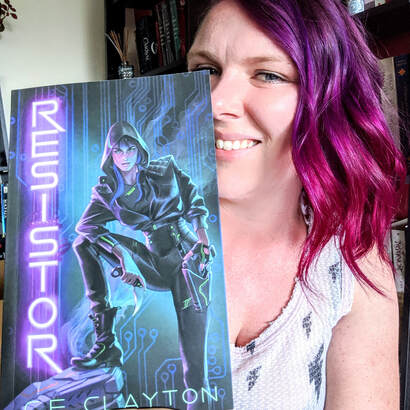 But the one thing you absolutely need to have? An ISBN number. You can either buy these from Bowker, or places like Amazon and IngramSpark will offer you an ISBN when you are setting up your book’s data in their respective systems. Personally, I like buying the ISBNs from Bowker as then I can use those numbers no matter where I publish. If you use Amazon’s ISBN, and then went to IngramSpark to put your paperback there and take advantage of their distribution channels, there could be complications with using the ISBN Amazon gave you. I like buying a lot of ISBN numbers from Bowker all at once, as each format of your book will get its own number, even if it’s the same book. So, for example, “Resistor” has a different ISBN number for its paperback, its hardcover, and its ebook. Buying big bundles from Bowker made sense for my purposes, but that can be pricey, so do what makes you feel comfortable financially, and you can always buy more if you want to. A word of caution about Bowker: once you begin assigning ISBNs to your books, Bowker will ask you to fill out your book’s information. Things like price and release date etc. Some of these things you have to fill out, others are optional, like uploading your book cover into Bowker. Do not upload your book cover until you have done a cover reveal. Here’s why: Bowker shares your book information with search engines like Google. Which can be great because it makes finding your book easier for readers, but if you haven’t done your title or cover reveal yet, Bowker may spoil that for you, and getting them to take your cover down afterwards is a real pain… My advice? Only put in the bare minimum of what is required. You can always go back in and modify some of the information later, or fill out that optional information after your book releases, but your cover reveal is a big deal and it’s no fun when it accidentally gets spoiled. 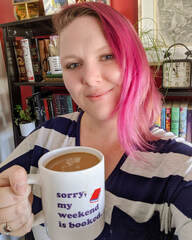 There’s a lot more that goes into publishing, obviously, but it can get pretty nuanced, and these were the questions I was asked specifically recently, so if you have other questions, please let me know! This won’t be the last of my blog posts about publishing and just how and where to start with that process. But I don’t know what you do or don’t know, so don’t hesitate to ask! I’m still learning new things about the best (and easiest) way to get my books out there as, fortunately or unfortunately, this is a business that changes frequently and you can only learn by doing sometimes. Which means, yes, you will make mistakes. I’ve made lots of them! But with each book you publish, the more you learn and the easier it gets, I promise. But I hope this was at least a little helpful, or interesting, or maybe even gave you a new appreciation for all the things you didn’t realize indie authors have to consider when bringing a book to life. |
Archives
April 2023
|
 RSS Feed
RSS Feed